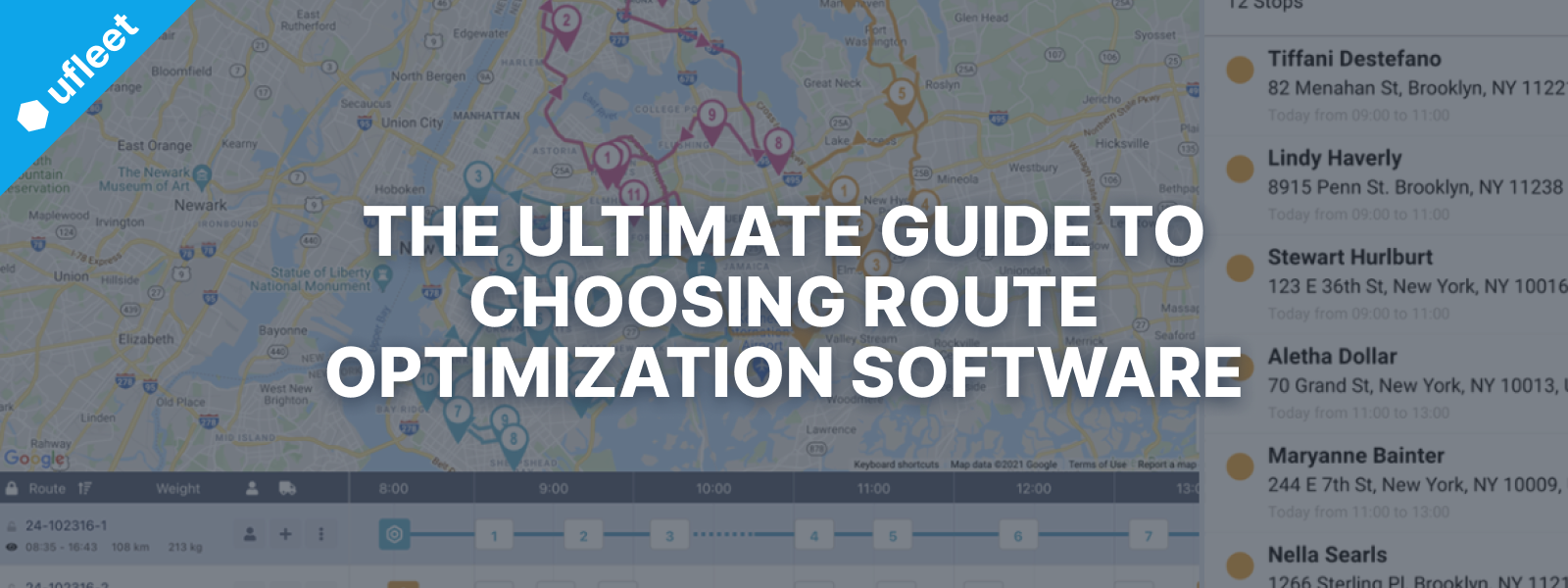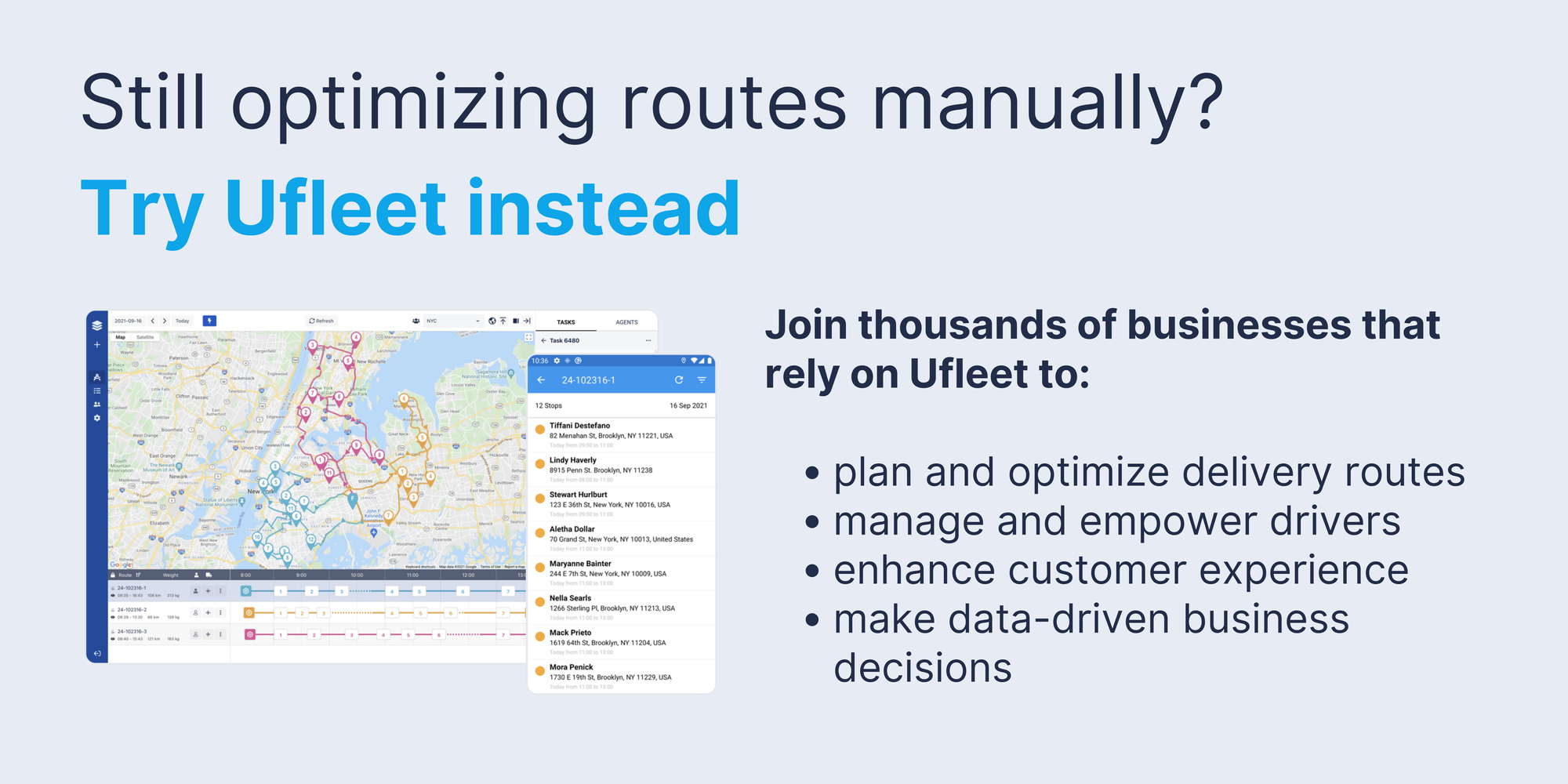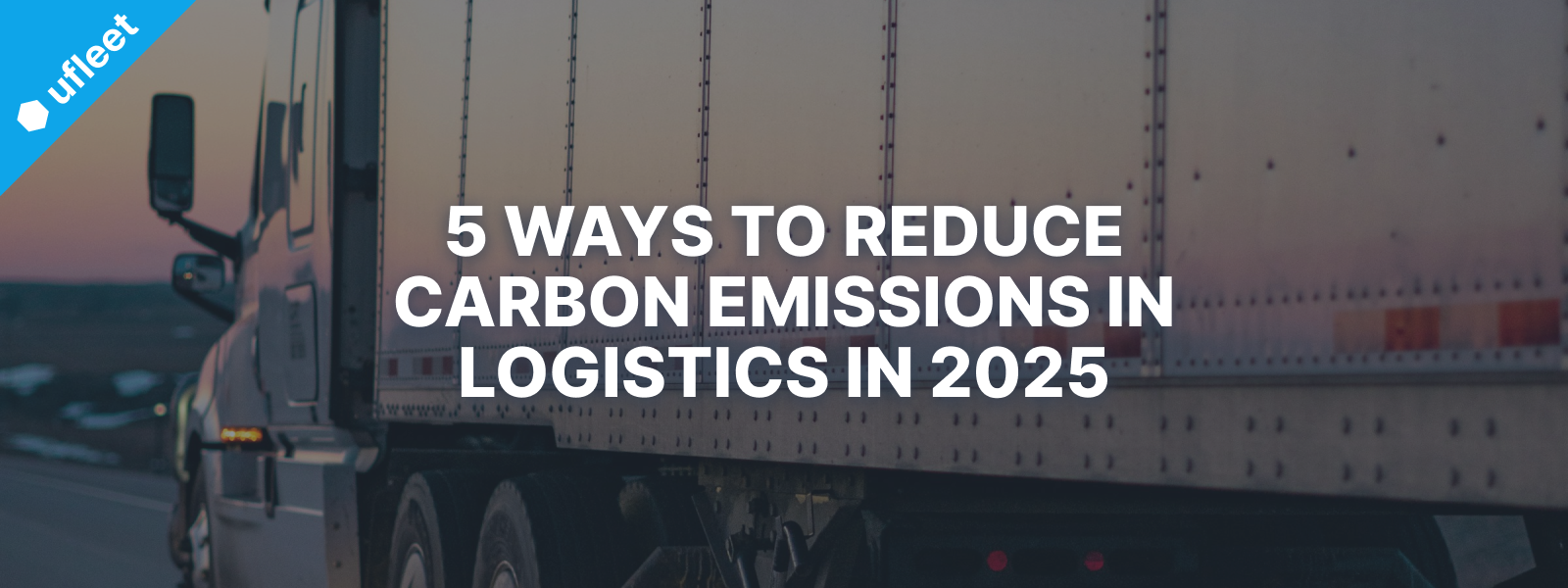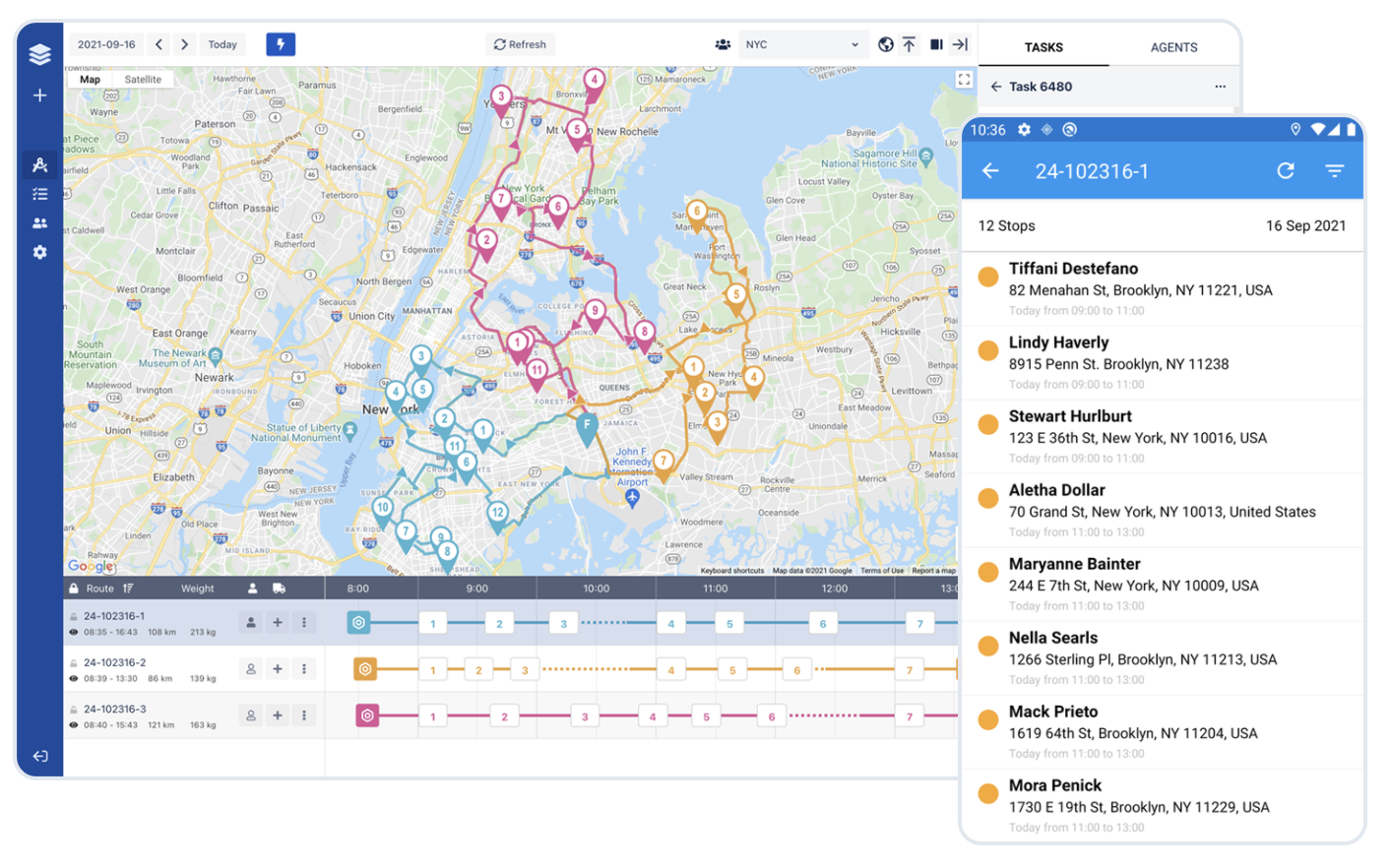Picking route optimization software is more than ticking feature boxes. It's about making a strategic decision for your business's future.

Last mile delivery is the final leg of the delivery journey when a package is delivered from a distribution center to the customer's doorstep. It’s often the most expensive and time-consuming part of the delivery process—accumulating up to 53% of all delivery costs—and has a huge impact on customer satisfaction.
Route optimization software (also known as last mile delivery, route planning or delivery management software) plays a key role in reducing the costs and time spent of route planning and delivery. It also attributes to a more efficient delivery process and improved customer satisfaction.
To reap the benefits of this smart technology, you need to choose your technology partner wisely. The right platform will ease your workload and allow you to scale. The wrong one will lead to more costs and struggles than benefits.
Whether a platform is right or wrong for your business depends on many factors such as your business model, delivery volume, expansion plans, etc.
There isn’t a one-size-fits-all but the following guide will help you navigate through the process of research and evaluation. It will cover everything you need to know to pick the best route optimization software for YOUR business.
Here's a quick summary of what you'll learn:
- Step 1: Preparation
- Step 2: Research and shortlist
- Step 3: See the shortlisted vendors in action
- Would Ufleet be your trusted technology partner?
- Frequently asked question
- Takeaways
Step 1: Preparation
Choosing the most suitable route optimization software for your business is an important decision that requires thoughtful approach. For starters, you need to do some preparation that includes a few substeps:
Define your goals
Think of your goals as achievable outcomes that are broad and long-term. The goals for every business are unique but here are a few examples for broad and long-term goals:
- Decrease delivery costs
- Achieve efficient delivery operations
- Achieve sustainable delivery
- Build and maintain customer loyalty
- Make data-driven decisions
Your goals should be the north star that's guiding your actions. Once you've set them, you can move to defining your objectives.
Define your objectives
The objectives are measurable and short-term actions that allow you to achieve your long-term goals. Your objectives in the software search are based on two factors:
- The current problems you want to solve: This will help you set your priorities and identify the key features you should be looking for. It will also help you define the must-haves, should-haves, and nice-to-haves in the sofware search.
- Your vision for your business: This will allow you to identify a route optimization software that will solve your current AND future problems. It will also guide you in choosing a technology partner that will support the growth of your business by providing know-how and industry knowledge.
For example, if your goal is to decrease delivery costs, your objectives could be decreasing total mileage, fuel consumption, and idle time.
If your goal is to build and maintain customer loyalty, your objectives could be taking full control of the delivery experience, providing real-time tracking, collecting customer feedback, promoting loyalty programs, etc.
If your goal is to achieve sustainable delivery, then your objectives could be to reduce carbon emissions and mileage, etc.
Define stakeholders
Depending on the size of your organization there might be different people who’ll be affected by the adoption of last mile delivery software. These people are important as they can provide key insights into the nitty-gritty details of your delivery process and challenges, and help you choose the best-fitted solution.
You first need to define who they are. Then you need to define to what extent they should be involved in the process. In most cases, people will fall into one or more of these categories:
- Responsible
- Accountable
- Consulted
- Informed
This is also called a RACI Matrix and is a common tool used in project management that eases and brings clarity into a decision-making process.
So, back to your case—each stakeholder might have specific requirements for the route optimization software. Or, they might need to integrate specific systems they currently work with. Ask the stakeholders to share their pains and requests, and include them in the research and evaluation.
Set a timeframe
This one might be tricky! But you really need to take it seriously—do set a deadline to this project and stick to it. Otherwise, there’s a huge chance this might stay forever on your To-Do list because of other priorities popping up.
Don’t wait until software implementation becomes too critical. The research, implementation and adoption of a software take time and resources and it's always a better move to take this step as soon as possible. Postponing the decision for too long might negatively affect your business operations and will ultimately lead to more stress and challenges.
Set a budget
Identify how much you’re willing to spend and to what extent you can make compromises with the price and value of the product.
Keep in mind that the route optimization software is likely going to improve your operational efficiency hence other costs will decrease. It will also significantly free up your schedule so you’ll be able to use this time for finding new customers and improving your business.
In most cases, it takes 6 months on average to return your investment. If you want to get a rough overview of the potential ROI of route optimization software, you can use the formula explained in this guide.
Step 2: Research and shortlist
Once you’re done with the preparation, it’s time to do your research, compare route optimization solutions, and pick the top favorites that you’ll explore further. Here’s how to approach this step:
Explore the product features
Your goal is to validate if the software solves your current problems but can also support you in the future. For starters, look for the features that correspond to your must-haves. Likely, many of the vendors will have that main functionality.
Then, look at the extra features that help you address the should-haves and nice-to-haves. Dive into the specifics of each feature, and understand how they align with your goals and objectives.
Evaluate integrations carefully, as seamless connectivity with your existing systems is key for smooth operations. Last but not least, check to what extent the software can support you as you scale.

Get familiar with pricing
In theory, this step should help you compare vendors’ offers. But in reality, relying solely on what’s written on the vendors’ websites, won’t give you the full picture. In most cases, you’ll end up comparing apples to oranges because:
- The pricing models of different vendors might vary (per task, fixed pricing, etc)
- What’s included in the pricing varies (integrations, support, white-labeling, etc)
- Pricing is not always publicly available as vendors approach each prospect individually
These factors can often make pricing comparison difficult. For an accurate comparison, you’ll need to jump on a call and/or request a personalized price quote (more on this in the next paragraphs).
However, at this stage, your goal is to get familiar with the pricing models and get an overall idea of what to expect.The common pricing models include:
- Per task: Best for businesses with variable volumes. You pay for each delivery or route planned, which can be cost-effective during low-demand periods.
- Per driver: Suitable for companies with a stable number of drivers. This model offers predictability in expenses, aligning costs directly with your team size.
- Fixed pricing: Ideal for businesses seeking budget stability. It involves a set fee for a range of services, regardless of usage levels. This can simplify financial planning but may lead to overpaying during lower usage periods.
- Custom pricing: Tailored to your specific needs, often used by larger enterprises requiring a bespoke solution.
Shortlist your top 3 vendors
This one is super important! You might be tempted to go on a demo with all the vendors out there.
However, this is not a good idea as you’ll end up overwhelmed with information. Ultimately, this might leave you more confused than informed.
It’s a much better approach to shortlist up to 3 vendors. For starters, this will be more than enough to familiarize yourself with the landscape.
If you like them, proceed further. If none of them resonate with your needs, then go and pick other 3. The goal is to be mindful of your time and resources.
Step 3: See the shortlisted vendors in action
Once you’ve picked your top 3, it’s time to see them in action. This includes booking a demo, diving into a more detailed discussion about its functionality, and trying the product yourself.
See a demo of the product
A demo allows you to see the user interface and understand if the platform has the necessary features to address your specific challenges. You’ll also have the chance to ask questions and clarify any doubts you might have.
The demo has a few goals:
- Familiarize the vendor with your business, challenges, and needs
- Dive deeper into the product functionality and customization opportunities
- Get insights into the vendor’s attitude, commitment, and approach
To make the most out of your demo call, go into details about your most common tasks, and your specific, most unusual ones. Discuss how the platform can be tailored to fit your specific requirements and how it can scale with your business growth.
Ensure that representatives from relevant departments (e.g., logistics, customer service, IT) are present during the demo. Their unique perspectives will be key in evaluating route planning software.
Ask about the software implementation
Getting familiar with the software implementation process will help you plan your time and resources wisely.
Depending on the complexity and the size of your business, it might take between a few days and several months. In most cases, the duration depends on your involvement. The more time you dedicate, the faster it will be.
Here’s the place to ask about the support you’ll get during the setup and onboarding too. Having a dedicated person to guide you through the process will make it much easier for you. Discuss training opportunities for your team too.
Discuss pricing
When discussing pricing, it's crucial to delve beyond surface-level costs and understand the comprehensive financial commitment involved. This includes not only the initial investment but also any ongoing expenses such as maintenance fees, upgrades, and support services.
Explore different pricing tiers to see what features and benefits each level offers, ensuring you choose a plan that matches your needs without paying for unnecessary extras. Additionally, ask about the flexibility of the pricing structure to accommodate future growth or changes in your business.
It's also wise to discuss payment terms and any available discounts for longer commitments or early payments. Negotiating these terms upfront can optimize your financial planning and secure the best possible deal for your business.
Try the product
This step is essential. Often, something that looked easy during a demo might not feel that way when you start using it. That’s why you need to test it yourself.
Explore how the software handles your usual tasks and any challenges you come across day-to-day. Get everyone who'll use it involved, from your drivers to the managers, so you get feedback from all angles. See how well it works with the tools you already use and if it makes things easier or if there are any hiccups.
It's also important to jump into testing the software right away during a trial period. A big mistake people make is waiting until the last minute to start the trial. Waiting too long means you won't have enough time to test various scenarios and see if it fits your needs.
Would Ufleet be your trusted technology partner?
We started with Ufleet in 2016. Since then, we enable 1000+ businesses globally to run predictable deliveries, reduce last mile costs and keep customers happy.
Besides the core features you need for efficient delivery operations, there are a few other benefits that you'll get with us exclusively:
- Flexibility & customizations: We strive to make things work for you specifically. This includes custom functionalities, bespoke integrations, white-label customer portal, and more.
- Dedicated onboarding & support: We won't just sell you the product and end things there. Instead, you'll receive setup assistance, implementation guidance and personal attitude. We do care about your growth and will always be there to help you make the most out of the platform.
- Straightforward pricing: What you see is what you get. All existing features are included and we do not charge additionally for setup or support fees. No hidden costs. Transparency is a priority for us.
- Excellent optimization algorithms: We use additional parameters for a super precise optimization. Data and AI are part of our solution from day one, even before it was cool.
Frequently asked question
🚚 What is route optimization software?
Route optimization software is technology designed to find the most efficient routes for deliveries, improve customer satisfaction, and increase operational efficiency.
🚚 How do route optimization algorithms work?
Route optimization algorithms analyze multiple factors like distance, sequencing, truck capacity, delivery windows, and more to find the most efficient route.
🚚 Why do I need route optimization software?
Route optimization software cuts costs improves operational efficiency, and enhances customer satisfaction. Also, it helps your business grow.
🚚 Can route optimization software integrate with other business systems? Yes, most software solutions can integrate with various CRM, ERP, and other e-commerce platforms.
🚚 How long does it take to implement route optimization software?
Implementation times can vary but typically range from a few days to several months, depending on the complexity of your operations, the level of customization, and most importantly—your availability and responsiveness.
🚚 What is the ROI of implementing route optimization software?
Businesses often see a quick return on investment through reduced operational costs and improved efficiency. It depends on the complexity of your business, but it usually takes approximately 6 months.
Takeaways
Choosing route optimization software is more than ticking feature boxes. It's about making a strategic decision for your business's future.
This guide has walked you through each crucial step, from understanding your needs and setting clear objectives to diving deep into demos and trials. The key takeaway is: don't rush it, involve your team, and prioritize a solution that not only solves today's challenges but can also support you in the future.
Last but not least, it’s about ensuring your team can adopt it smoothly, it integrates well with your current systems, and ultimately, it improves your bottom line. A wise choice here sets your business up for efficiency, customer satisfaction, and competitive advantage.
If you found this post helpful, subscribe below to receive similar insights straight in your inbox.❤️✉️
Never miss a post
You may also like…
 Tips & Know-How5 Ways to Reduce Carbon Emissions in Logistics in 2025
Tips & Know-How5 Ways to Reduce Carbon Emissions in Logistics in 2025You too can reduce costs and improve efficiency with Ufleet
- plan and optimize delivery routes
- manage and empower drivers
- enhance customer experience
- make data-driven business decisions
We’d love to learn about your challenges.
Leave your email and we’ll get back to you.

